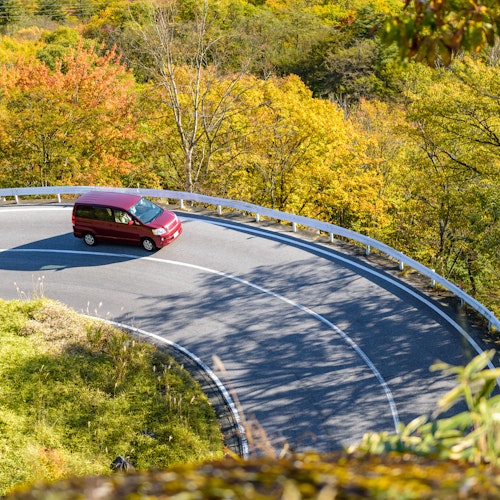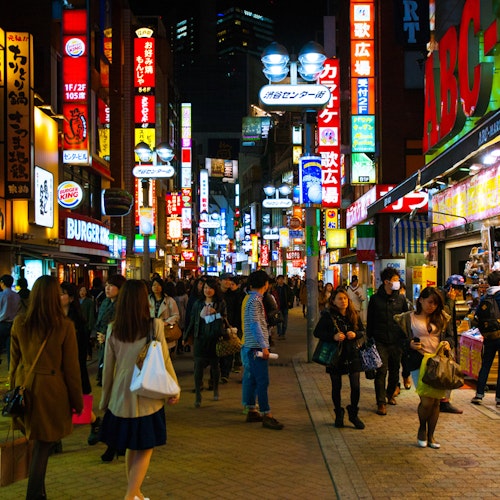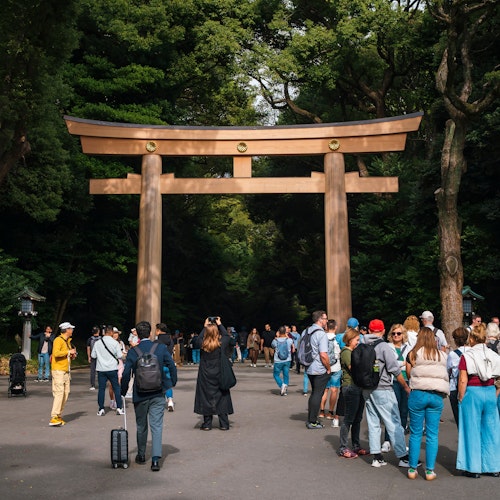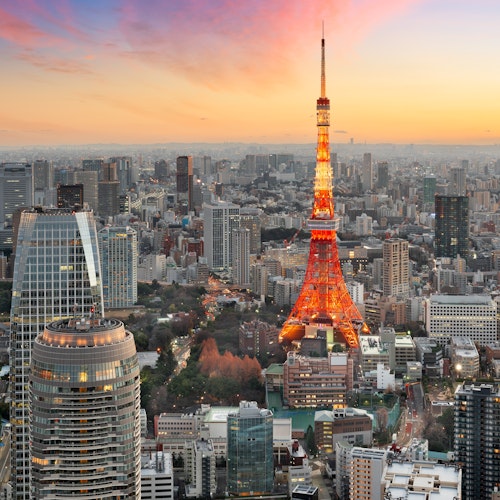
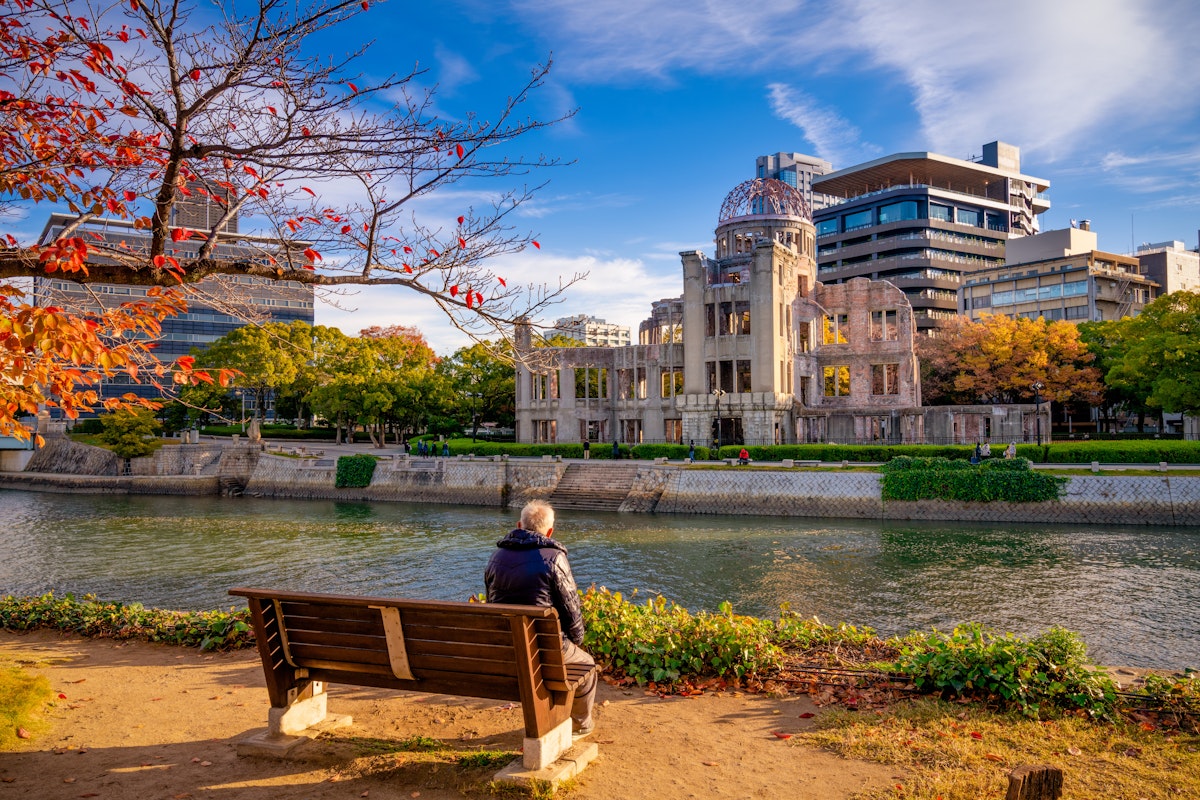
世界でたった2つの場所として、広島と長崎は、核兵器の計り知れない破壊力を痛烈に思い起こさせる場所です。
かつては破壊されたこれらの都市は、現在、1945年8月の壊滅的な出来事を証言する記念碑や平和公園の本拠地となっています。これらの記念碑を訪れることで、人類史上最も悲劇的な章の1つを垣間見ることができ、平和と軍縮に対する普遍的な願望を強めることができます。
で広島長崎には、原爆で亡くなった人々の記憶を保存し、訪問者に核戦争の恐ろしさについて教育するための無数のサイト、モニュメント、博物館があります。広島の象徴的な原爆ドームから、混雑は少ないが同じように感動的な場所まで長崎原爆資料館では、過去を深く探ることができます。
この記事では、広島と長崎にある、回復力、希望、そして平和の永続的な追求の強力なシンボルとして機能する20の必見の記念碑を紹介します。
1945年のある夏の日、世界はかつてないほどの破壊を目の当たりにしました。「リトルボーイ」として知られる最初の原子爆弾は、米軍によって日本の広島に投下されました。建物が崩れ落ち、火が燃え上がり、多くの命が一瞬で失われました。街は廃墟と化していた。それから間もなくの8月9日、2発目の爆弾「ファットマン」が長崎を襲った。この爆弾も甚大な被害をもたらし、多くの命を奪いました。
これらの攻撃は、日本を降伏させることで第二次世界大戦を終わらせることを意図していました。広島は軍事施設の標的となり、長崎は第一の標的が雲に覆われた後に爆撃された。これらの原爆投下により、日本は1945年8月15日に降伏し、終戦を迎えました。今日、原爆投下は、その大きな力と悲劇として記憶され、世界が平和と核兵器廃絶を求める理由を強く思い起こさせるものです。
広島の中心部に位置する広島平和記念公園は、広島の悲劇的な過去を厳粛に思い起こさせ、核戦争のない未来への希望の光となっています。かつては政治と商業の中心地として栄えていたこの広大な緑地は、現在、世界初の核攻撃で失われた数え切れないほどの命を追悼する役割を果たしています。120,000平方メートルを超える公園は、両側を川に抱かれており、かつての荒廃とは思えない静けさを感じさせます。
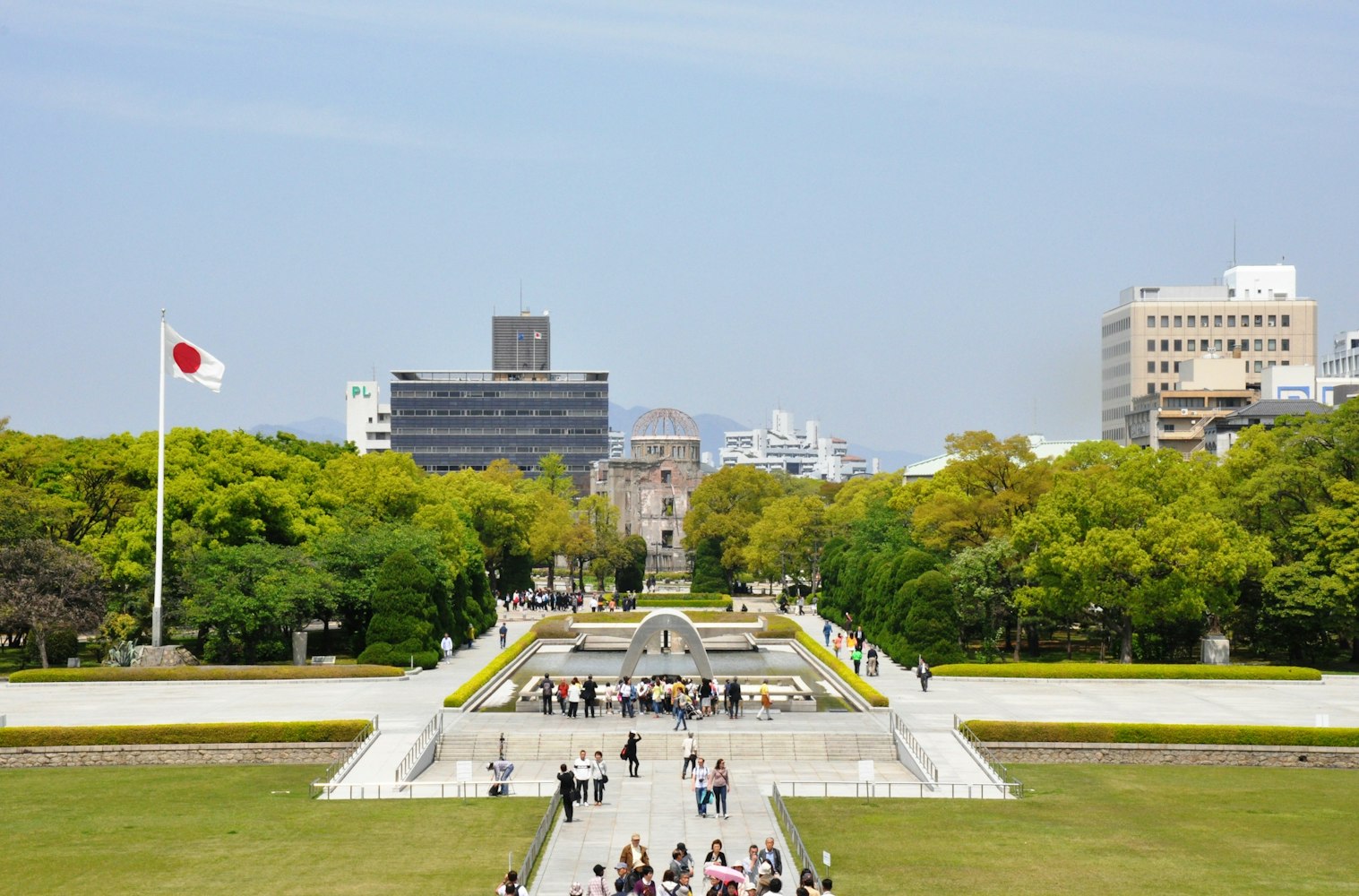
公園の主な施設は平和記念資料館で、広島の歴史そして核兵器の出現。犠牲者の所持品や原爆投下後の写真など、博物館の展示品は、無差別破壊と深刻な混乱の悲惨な物語を語っています。その陰鬱な主題にもかかわらず、公園は静かな空間として設計されており、記念碑や静かな思索のためのスペースが点在しています。
場所:中島町 1-2, 中区, 広島, 730-0811, 日本
開館時間:24時間年中無休
参加費:無料
締切日:年中無休
原爆ドームは、原爆ドームとも呼ばれ、1945年8月6日に広島に解き放たれた途方もない破壊力の象徴です。原爆爆の爆心地付近に唯一残された建造物です。もともと広島県産業振興会館だったこの建物は、原爆投下当時のままの状態で保存されており、震災の爪痕をはっきりと思い起こさせます。
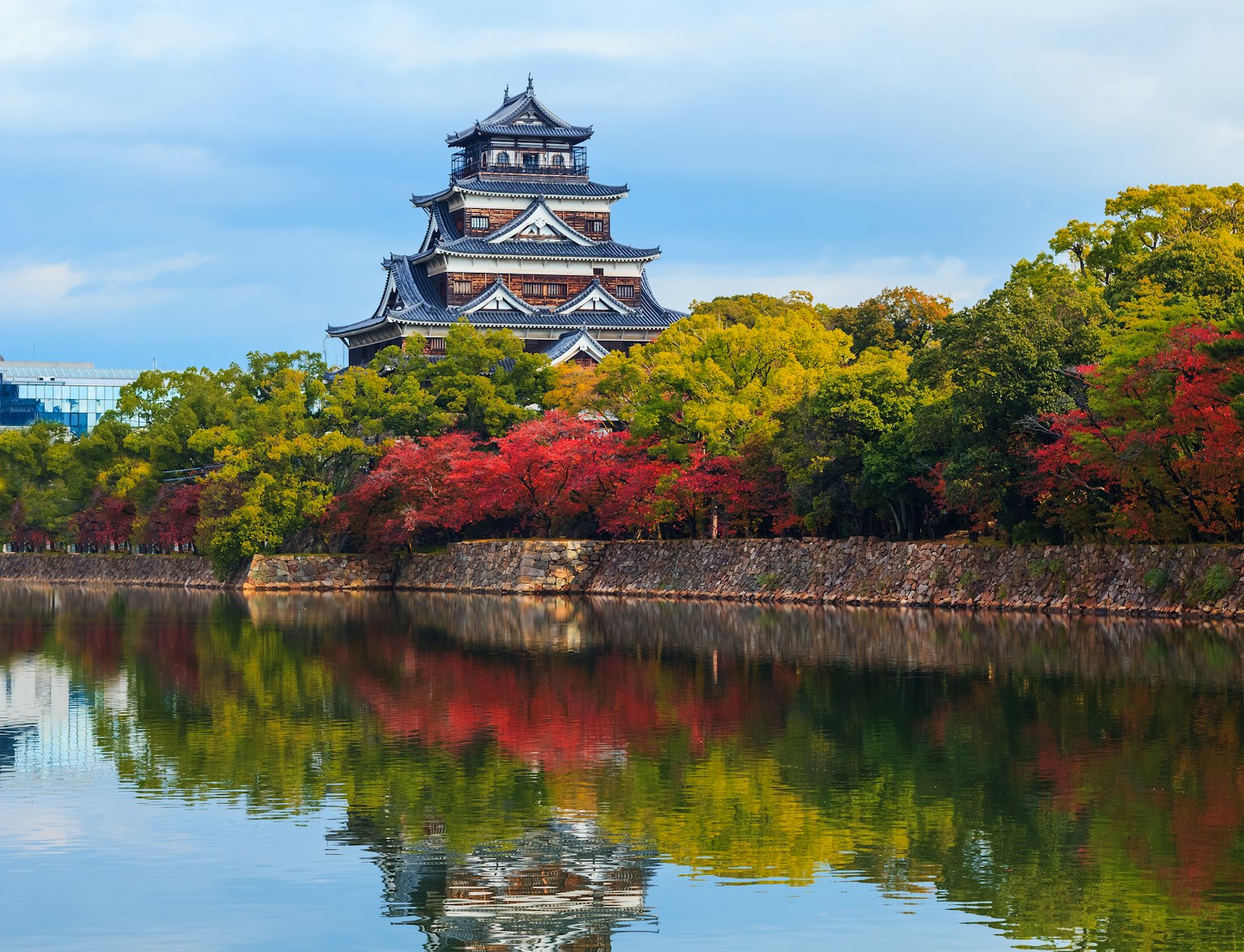
歴史の重みを持ちながらも、回復力と繁栄を誇る都市、ヒロシマを巡る忘れられない旅に出かけましょう。
現在、ドームはユネスコの世界遺産に登録されており、広島平和記念公園の中心となっています。その心に残るシルエットは、戦争の代償と平和の重要性を痛烈に物語っています。ドームを訪れる人々は、核戦争の厳しい現実に直面し、軍縮と紛争の平和的解決の緊急の必要性を強調しています。
場所:1-10 Otemachi, Naka Ward, 広島, 730-0051, 日本
開館時間:24時間営業、毎日外観の見学
参加費:無料
締切日:年中無休
子どもの平和記念碑は、広島の原爆の若い犠牲者への感動的な賛辞です。記念碑はに触発されました佐々木 貞子放射線被曝で白血病を発症し、折り鶴1000羽を折れば回復できると信じていた少女。それ以来、彼女の物語は、爆撃で失われた罪のない命の象徴となっています。
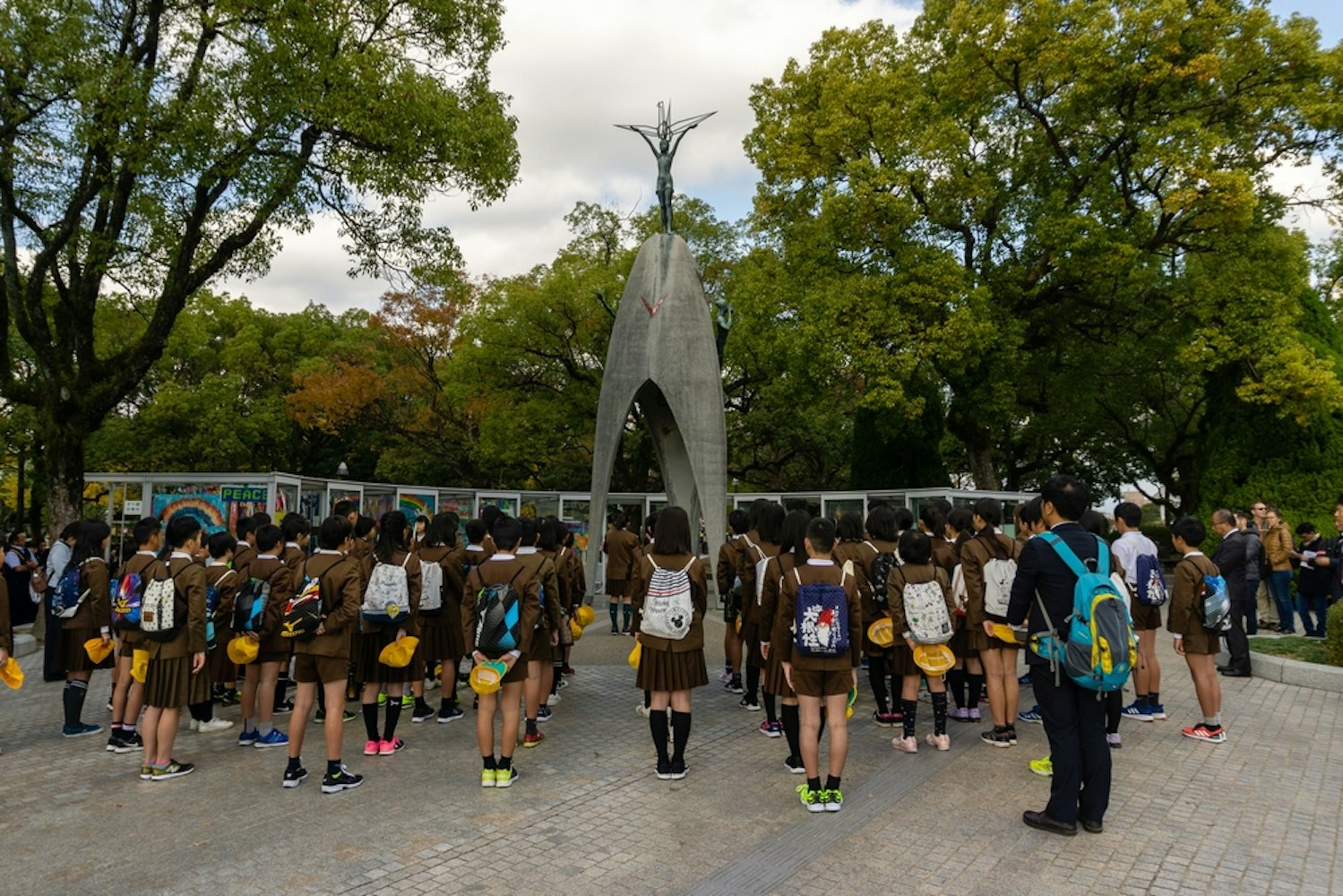
広島平和記念公園にそびえ立つこの記念碑は、頭上に金色の鶴を掲げた少女の像が特徴的です。記念碑の周囲には、世界中から送られた色とりどりの折り鶴が詰まったガラスケースがあり、核兵器のない平和な未来への祈りが込められています。「こども平和記念碑」は、原爆投下の人的被害を浮き彫りにし、このような悲劇の再発を防ぐという共通の責任を強く思い起こさせるものです。
場所:広島平和記念公園内、中区、広島、日本
開館時間:24時間年中無休
参加費:無料
締切日:年中無休
ザ広島広島平和記念公園内にある平和記念資料館は、核兵器の破壊力と戦争の深刻な人的犠牲を痛烈に物語っています。
被爆者が残した遺品から、被爆後の生々しい写真まで、原爆の様子を網羅し、深く感動させる展示が展示されています。博物館の使命は、単にあの運命の日の恐怖を語ることではなく、平和とすべての核兵器の廃絶のメッセージを促進することです。
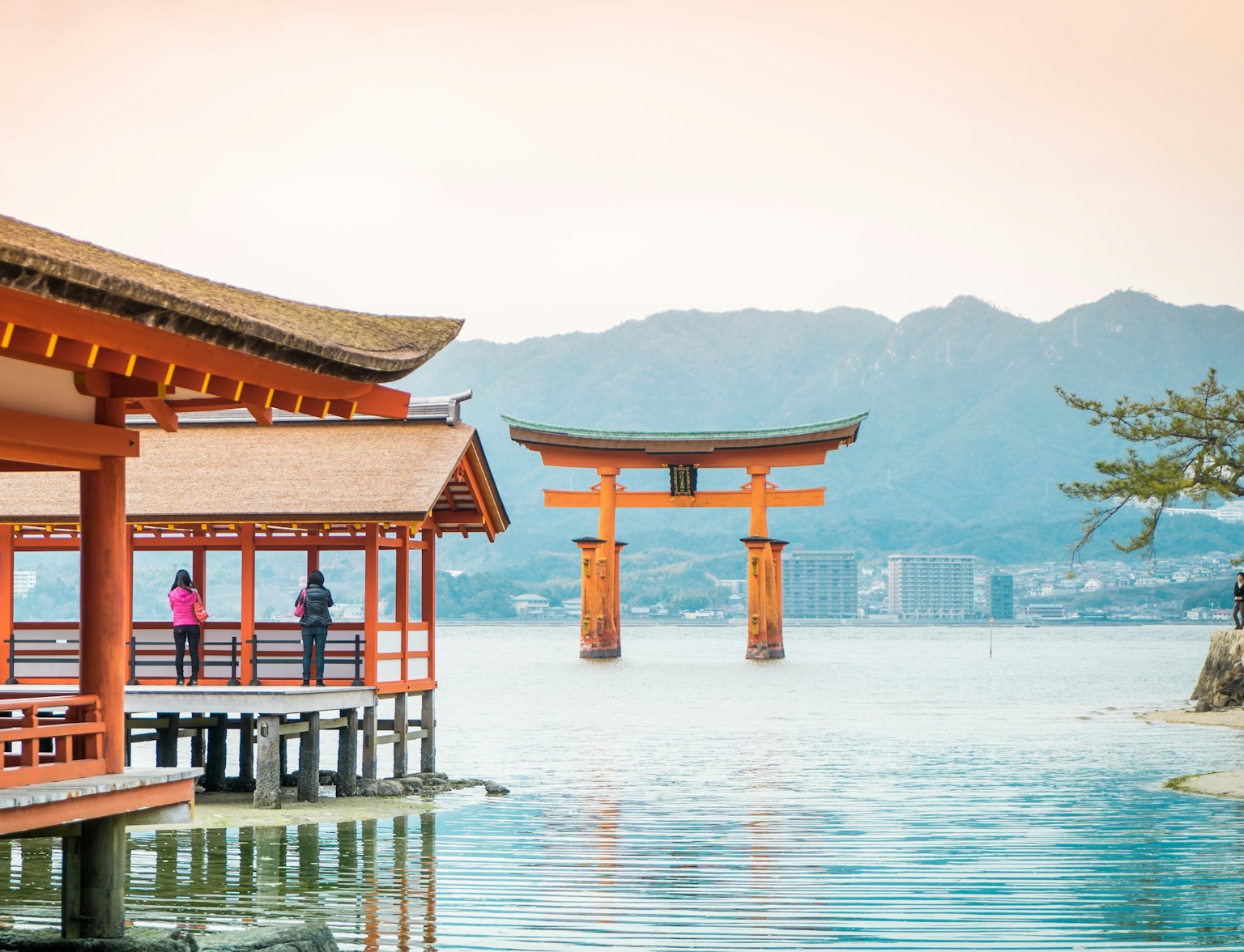
広島の歴史、文化、そして穏やかな精神性の豊かなタペストリーに浸りながら、この特別な一日の旅をお楽しみください。
博物館自体は2つの建物で構成されています。原爆投下前の広島の歴史、マンハッタン計画の一環としての原爆開発の過程、原爆の壊滅的な影響を調査する。
他の建物には、犠牲者と生存者の物語を伝える展示があります。これらが一体となって、核戦争によって引き起こされた荒廃と世界的な軍縮の緊急の必要性を訪問者にはっきりと思い出させます。
場所:中島町 1-2, 中区, 広島, 730-0811, 日本
開館時間:午前8時30分から午後6時00分(3月〜7月、9月〜11月)。午前8時30分から午後7時00分(8月);午前8時30分から午後5時00分(12月〜2月)。休館日:12月30日、31日、1月1日
参加費:200円(変更の可能性あり)
締切日:12月30日〜1月1日
広島平和記念公園のもう一つの目玉である慰霊碑は、原爆の犠牲者を祀る厳粛な慰霊碑です。慰霊碑には、国籍を問わず、原爆で亡くなったすべての人の名前が刻まれています。建築家・丹下健三が設計したアーチ型の建物で、犠牲者の魂の避難所となることを意図しています。
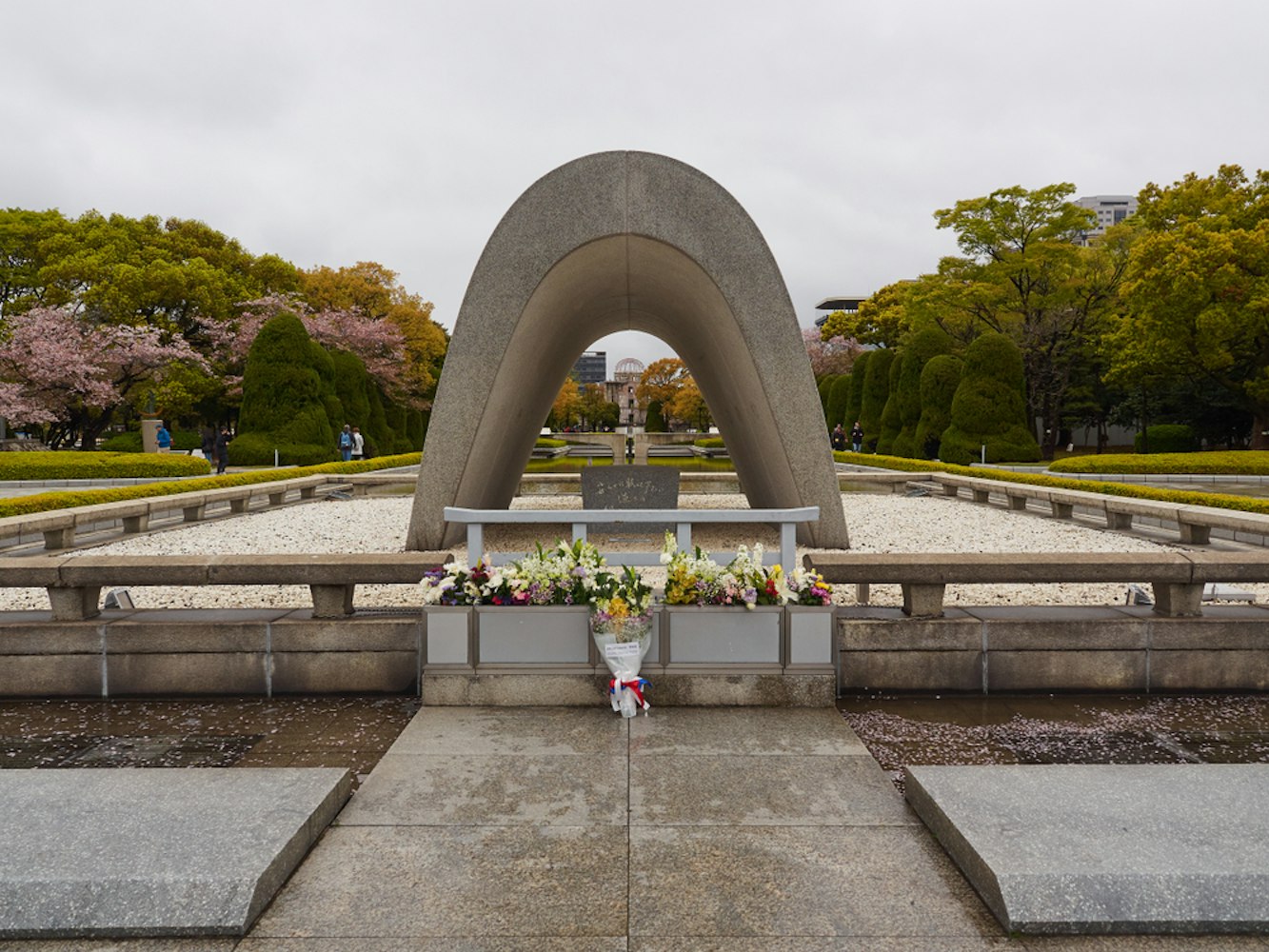
慰霊碑銘の墓碑銘は、悲劇の責任を問うものではない。その代わりに、「ここにいるすべての魂が安らかに眠れ、悪を繰り返さない」という言葉で、平和の普遍的なメッセージを伝えています。この声明は、その痛烈なデザインと相まって、慰霊碑を平和へのコミットメントと原爆の犠牲者を追悼する市の献身の強力なシンボルにしています。
場所:広島平和記念公園内、中区、広島、日本
開館時間:24時間年中無休
参加費:無料
締切日:年中無休
国立広島原爆死没者平和祈念館は、静かに反省し、追悼する場所です。その主な特徴は、訪問者が原爆の犠牲者に敬意を表することができる刺激的な空間である記憶のホールです。ホールでは、1945年末までに爆撃で亡くなった推定人数である140,000枚のタイルを使用して再現された破壊された街のパノラマビューを紹介します。
また、記念館には図書館があり、被爆者の証言など、原爆に関するさまざまな資料を閲覧することができます。これらの資料は、核戦争の人的影響と放射線被曝の永続的な影響について訪問者を教育するのに役立ちます。
場所:中島町 1-6, 中区, 広島, 730-0811, 日本
開館時間:毎日午前8時30分から午後5時00分まで。休館日:12月29日、30日、31日
参加費:無料
締切日:12月29日-12月31日
広島平和公園のレストハウスは、以前は大正屋着物店として知られていましたが、公園内で唯一原爆を生き延びた建物です。現在は情報センターとして、また原爆の歴史や影響について学ぶ場となっています。
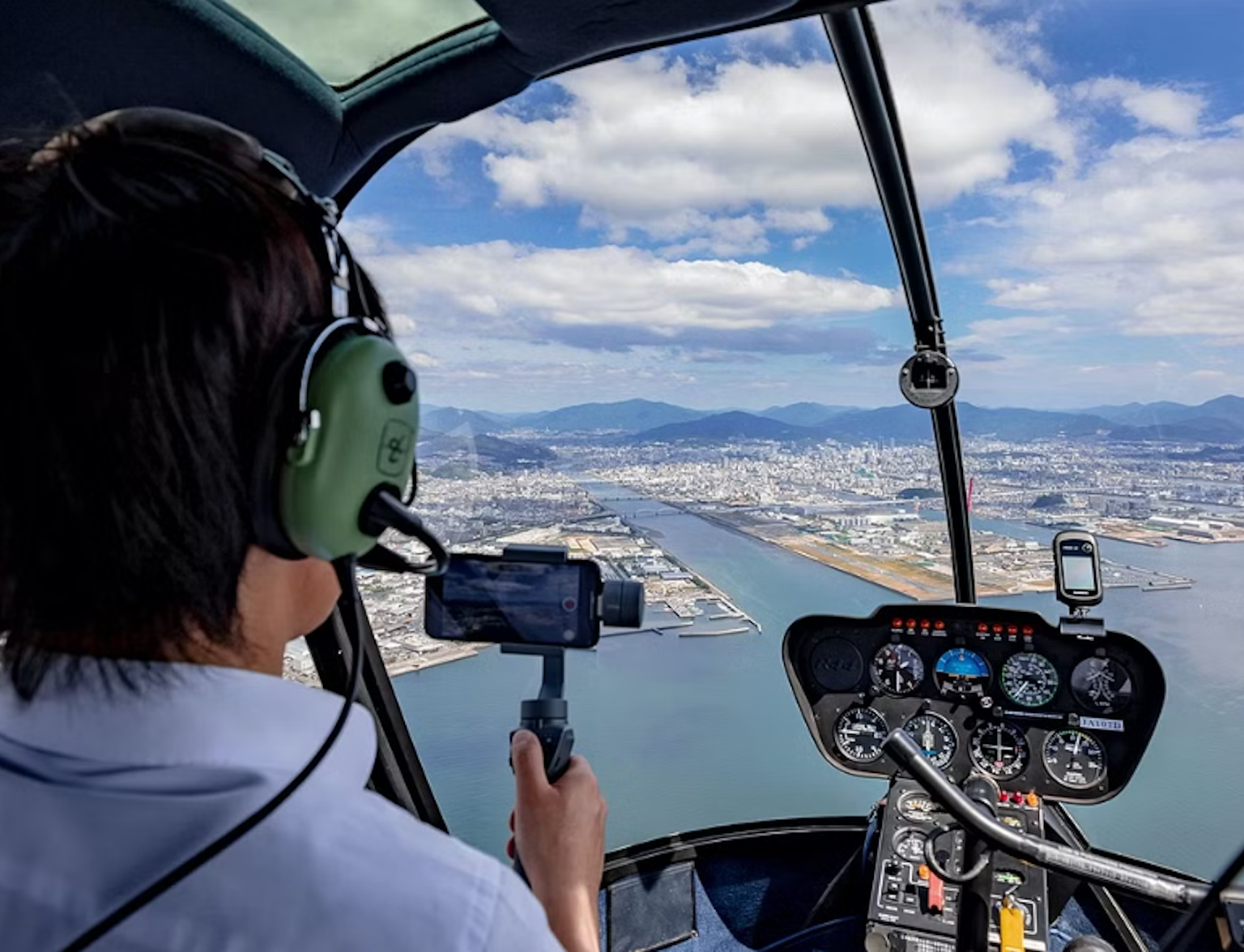
広島の象徴的なランドマークを上空から巡るヘリコプターツアーで、上空から広島を探索しましょう。
原爆が直撃した建物の地下室は、核兵器の破壊力の証として保存されています。訪問者は、爆風の傷跡が残っている元の壁や柱を見ることができます。レストハウスは、原爆の惨禍をまざまざと思い起こさせるものであり、核兵器のない世界を目指すことの重要性を強調しています。
場所:中島町 1-1, 中区, 広島, 730-0811, 日本
開館時間:毎日午前 8:30 から午後 5:00 まで
参加費:無料(一部のサービスやショップは有料の場合あり)
締切日:年中無休
鯉の城としても知られる広島城は、第二次世界大戦中の広島と長崎への原爆投下を生き延びた重要な歴史的建造物です。もともとは1590年代に建てられ、原子爆弾によって破壊されましたが、1958年に忠実に再建されました。今日、この城は広島の回復力と、完全な破壊の後でも再建し繁栄する能力の象徴として立っています。
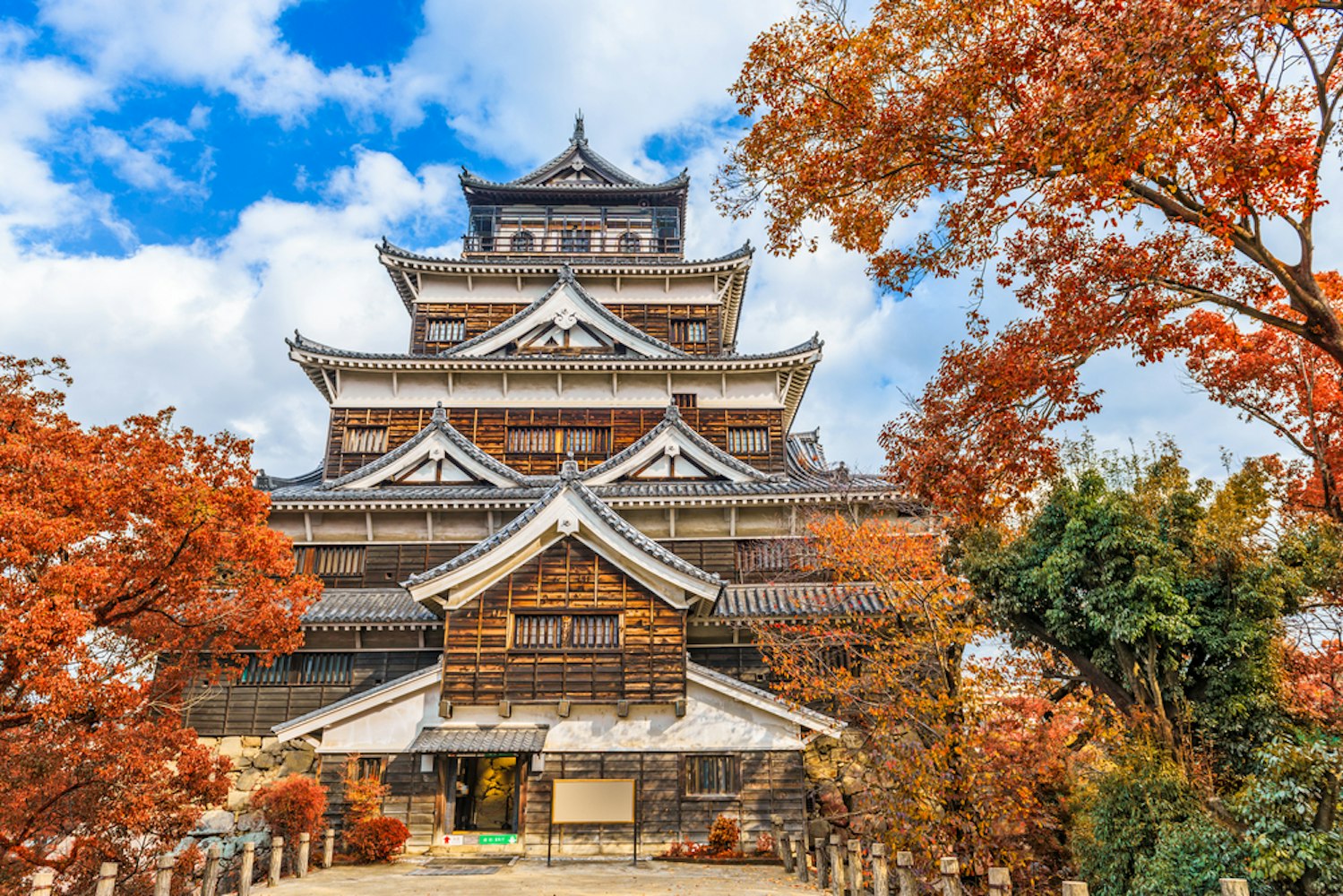
城内には、核兵器が出現する前の日本の歴史を知ることができる博物館があります。最上階からは市街のパノラマの景色を眺めることができます。広島城は原爆ドームとは対照的で、「リトルボーイ」ウラン爆弾が主な標的となり、破壊的な核爆発で街が廃墟と化す前の街の活気に満ちた過去を訪問者に思い出させます。
場所:21-1 Motomachi, Naka Ward, 広島, 730-0011, 日本
開館時間:午前9:00から午後6:00(3月〜11月)。午前9:00から午後5:00(12月〜2月)。休館日:12月29日〜31日
参加費:370円〜(本天守)、境内無料(変更になる場合があります)
締切日:12月29日-12月31日
広島市現代美術館は、1989年に開館した日本初の公立現代美術館です。この博物館は、原爆投下後の街の目覚ましい復興と成長の証です。この美術館には、原爆投下とその余波を振り返る作品など、さまざまな作品が収蔵されています。
美術館の建築自体は、自然環境や原爆の傷跡が残る街並みと調和するようにデザインされた芸術作品です。博物館は、展示を通じて、戦争、平和、人間の状態など、街の歴史と運命を永遠に変えたマンハッタン計画に本質的に関連しているすべてのテーマについて、訪問者に考えることを奨励しています。
場所:広島県南区肊山公園 1-1, 732-0815, 日本
開館時間:10:00〜17:00(入館は16:30まで)休館日:月曜日(祝日の場合は翌日)、12月29日〜1月3日
参加費:370円(一般、変更あり)、企画展により変動あり
締切日:12月29日(月)〜1月3日(月)
縮んだ風景の庭を意味する「縮景庭園」は、広島の歴史ある日本庭園です。原爆で大きな被害を受けましたが、1951年に修復され、再開されました。庭園は、ミニチュアの谷、山、森など、さまざまな風景の縮図です。悲劇的な過去で知られる街の真ん中にある静けさと自然の美しさの場所です。
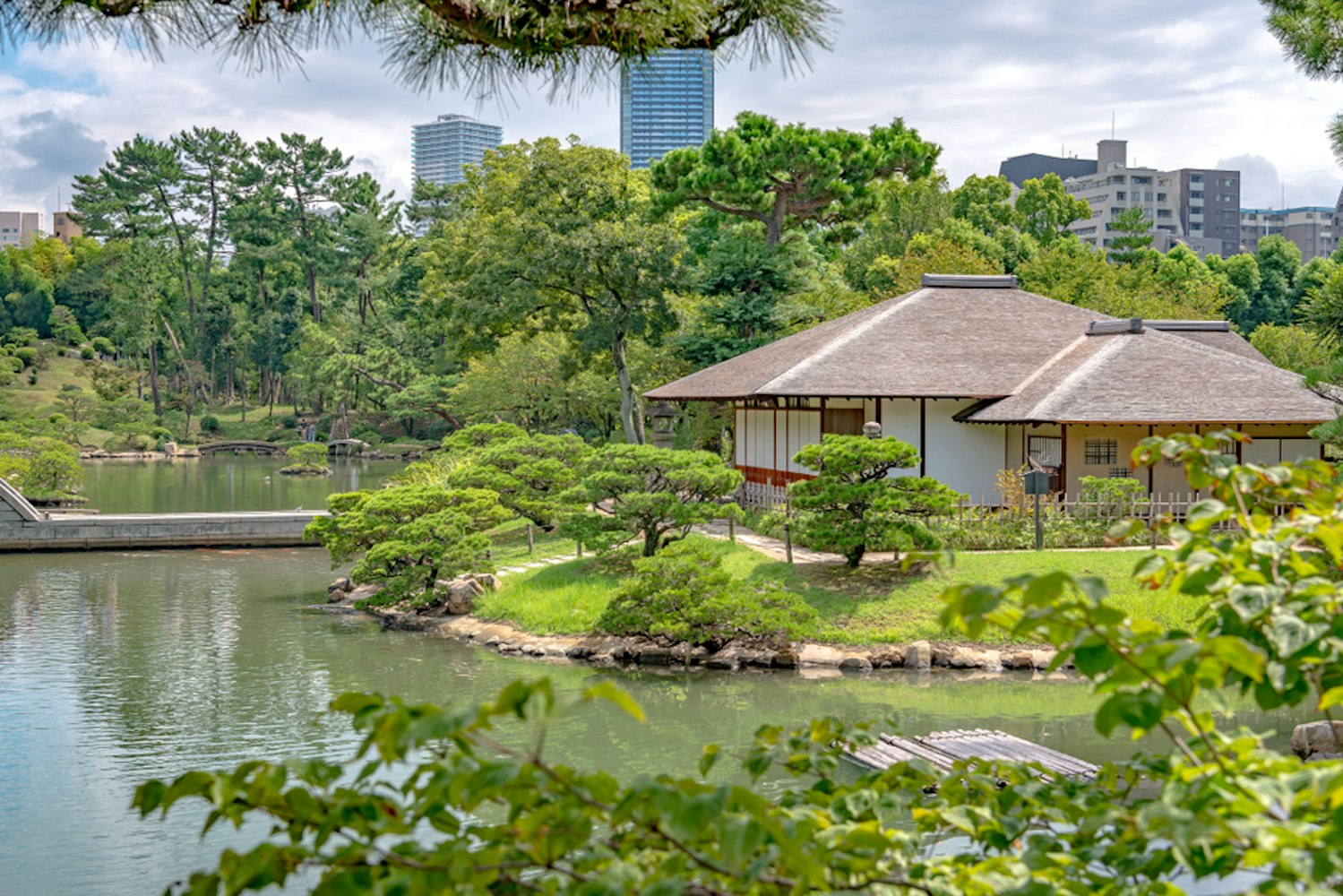
修景園は、広島城と同様に、原爆投下前の街の文化と美学を垣間見ることができます。その丁寧な修復は、広島の遺産を守り、戦後の復興に尽力していることを象徴しています。今日、この庭園は地元の人々や観光客にとって静かな隠れ家として機能し、かつて街を覆っていたキノコ雲の記憶とはまったく対照的です。
場所:上ノ堀町 2-11, 中区, 広島, 730-0014, 日本
開館時間:午前9:00から午後6:00(4月〜9月)。午前9:00から午後5:00(10月〜3月)。休館日:12月29日〜31日
参加費:大人260円、シニア150円、中学生・小人無料(変更あり)
締切日:12月29日-12月31日
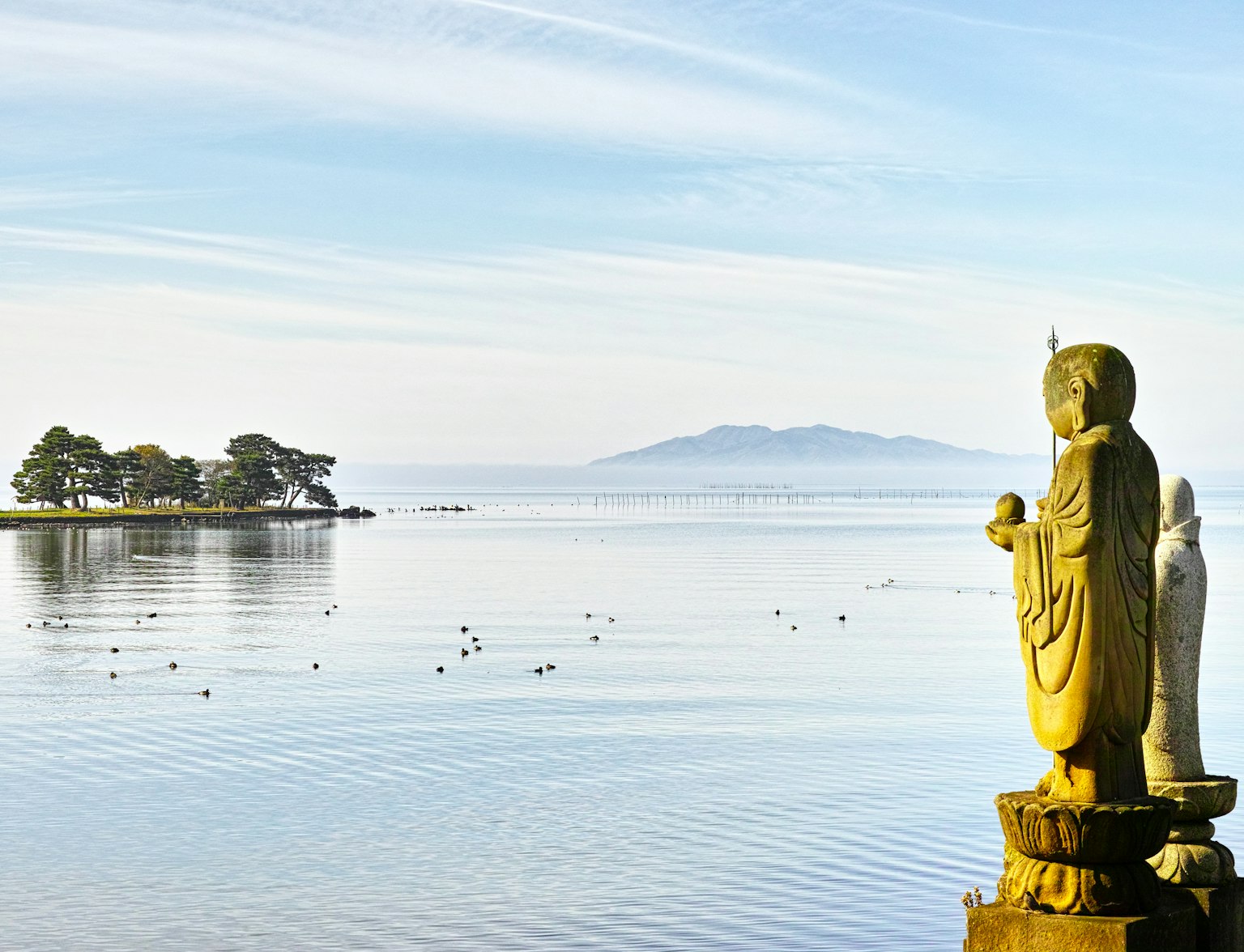
この3日間のプライベートバスツアーでShukkeien Gardenを訪れてください。
長崎平和公園は、第二次世界大戦中の長崎への原爆投下を記念する重要な場所です。爆心地に近い公園には、原爆の犠牲者となった多くの韓国人を追悼する「韓国人原爆犠牲者慰霊碑」など、いくつかの慰霊碑があります。公園の穏やかな環境は、日本に投下された2発目の原子爆弾「ファットマン」によって引き起こされた迅速で完全な破壊とは対照的です。
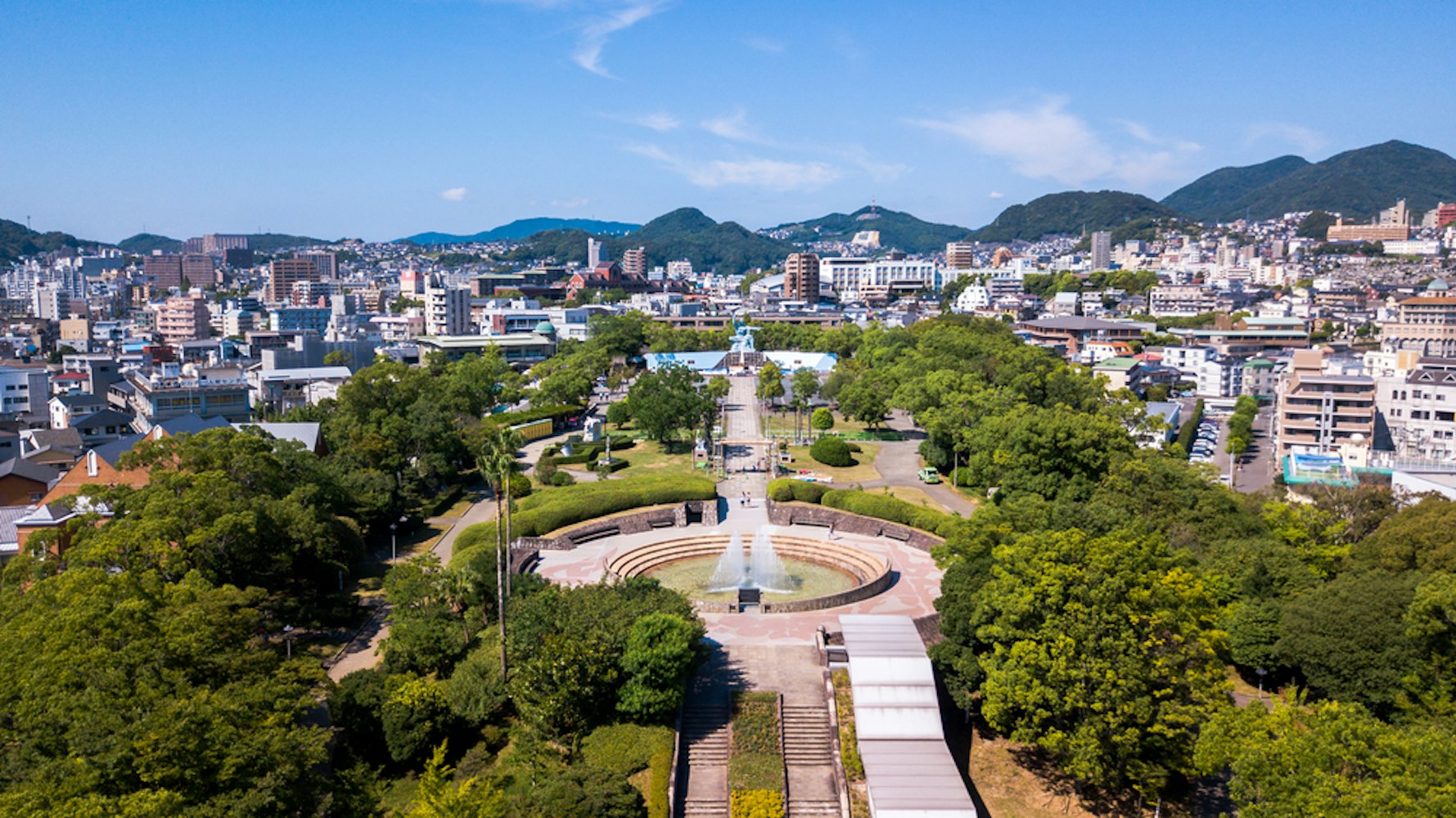
公園には、核爆発の正確なポイントを示す黒い一枚岩もあります。公園を訪れると、核兵器の計り知れない破壊力と、その使用がもたらす不可逆的な結果について考えることができます。これは、長崎の強靭さと平和促進へのコミットメントの証です。
場所:松山町、長崎、852-8118、日本
開館時間:24時間年中無休
参加費:無料
締切日:年中無休
長崎原爆資料館では、マンハッタン計画による核兵器の開発から原爆投下後まで、原爆投下を網羅的に紹介しています。この博物館には、原爆の遺物、写真、生存者の証言など、広島と長崎への原爆投下の人的被害を描写するさまざまな展示品があります。
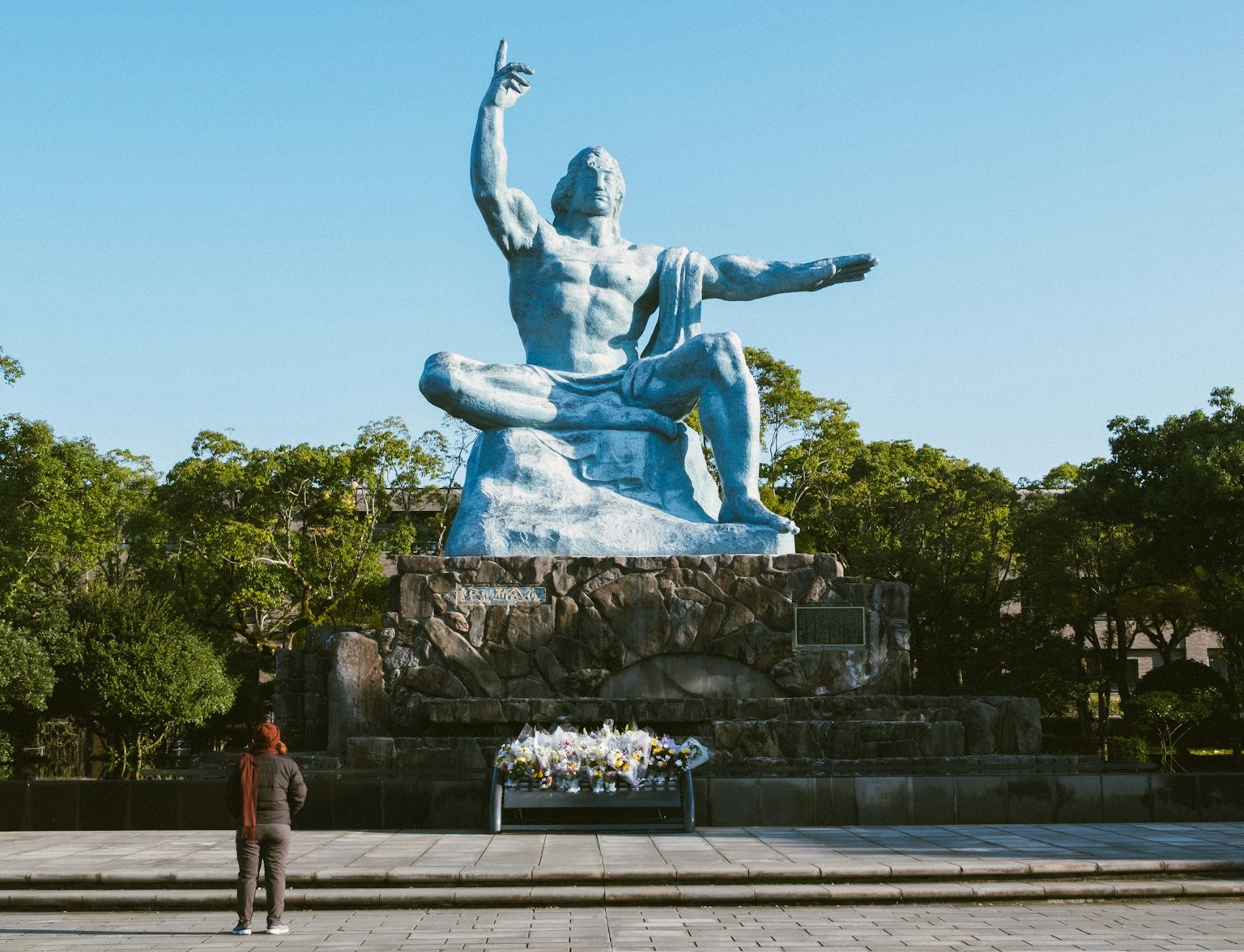
長崎の驚くべき歴史と回復力を、忘れられないセルフガイドオーディオツアーで発見してください。
広島記念公園と比べると規模は小さいですが、重厚で感動的な博物館です。原爆投下に至るまでの出来事、原爆投下そのもの、そしてその後の余波を詳細に年表に記し、事件の歴史的背景や日本の都市や軍隊への影響をより深く理解することができます。
場所:平野町 7-8, 長崎, 852-8117, 日本
開館時間:午前8時30分から午後5時30分(3月〜11月)。午前8時30分から午後5時00分(12月〜2月)。休館日:12月29日〜31日
参加費:200円(大人)、その他のカテゴリーは割引あり(変更になる場合があります)
締切日:12月29日〜31日
長崎平和公園を見下ろす長崎平和像は、希望の象徴であり、平和の記念碑です。片手で核兵器の脅威を指さし、もう片方の手を伸ばして平和を訴える像は、原爆の惨禍をはっきりと思い起こさせます。閉じた目は、原爆の犠牲者への祈りを捧げています。
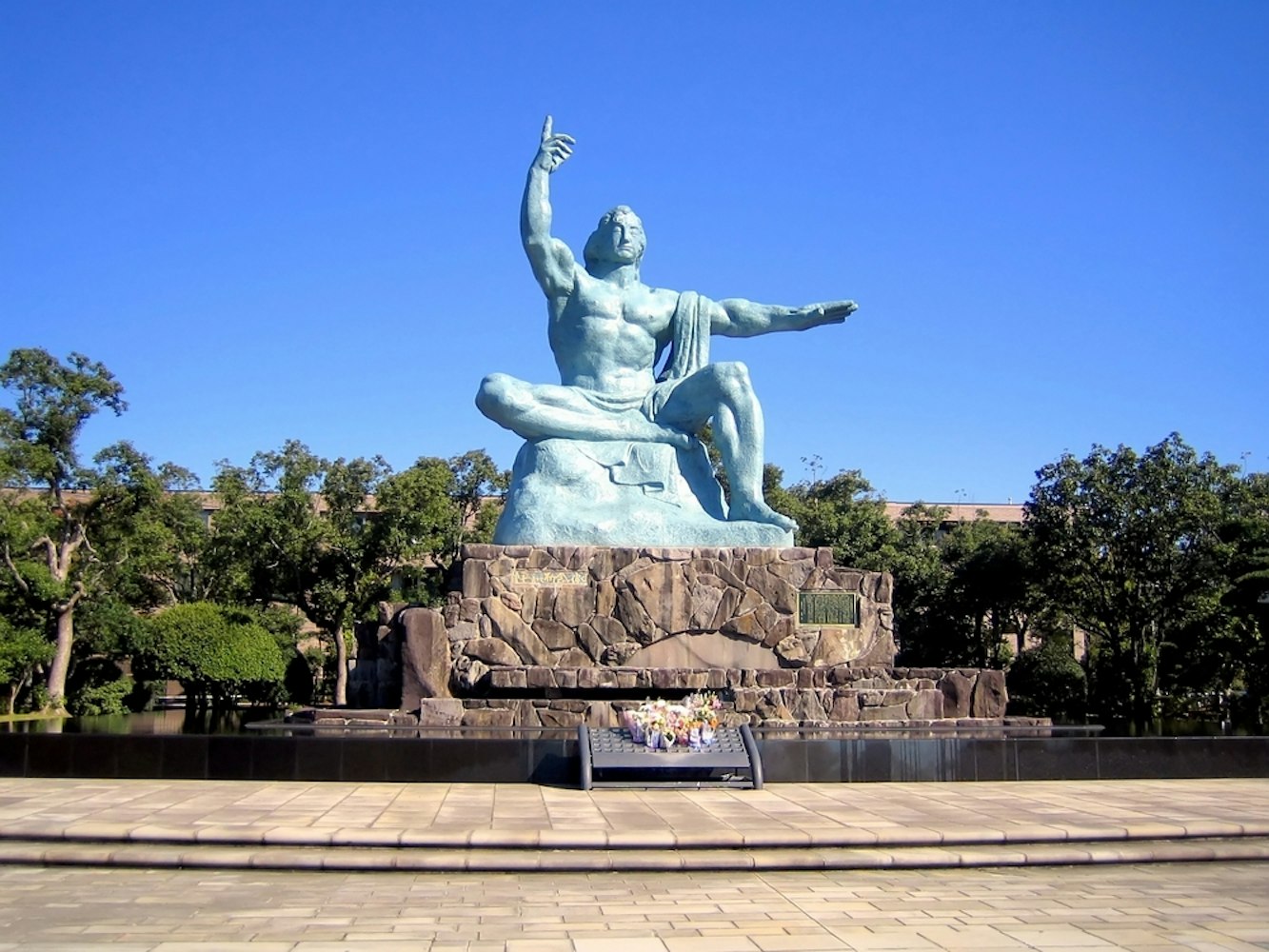
平和の像は、公園内の他の記念碑と同様に、核兵器の破壊力と世界的な軍縮の緊急の必要性を思い出させる役割を果たしています。核戦争の恐怖から解放された世界への希望の光として、平和への静かな祈りを捧げています。
場所:長崎平和公園内, 松山町, 長崎, 日本
開館時間:24時間年中無休
参加費:無料
締切日:年中無休
長崎にある爆心地公園は、1945年8月9日に原子爆弾が投下された正確な爆心地を示しています。この公園は、街を破壊し、何万人もの死傷者を出した核爆弾の爆発「ファットマン」を陰鬱に思い起こさせます。公園内には、原爆の爆心地を象徴する黒い一枚岩が立っており、原爆が爆発した正確な場所を示しています。
公園内には、原爆で全壊した旧浦上天主堂の壁面の残骸もあります。近くの銘板は、目もくらむような閃光とそれに続く爆風の後でも壁が立っていたことを説明しています。
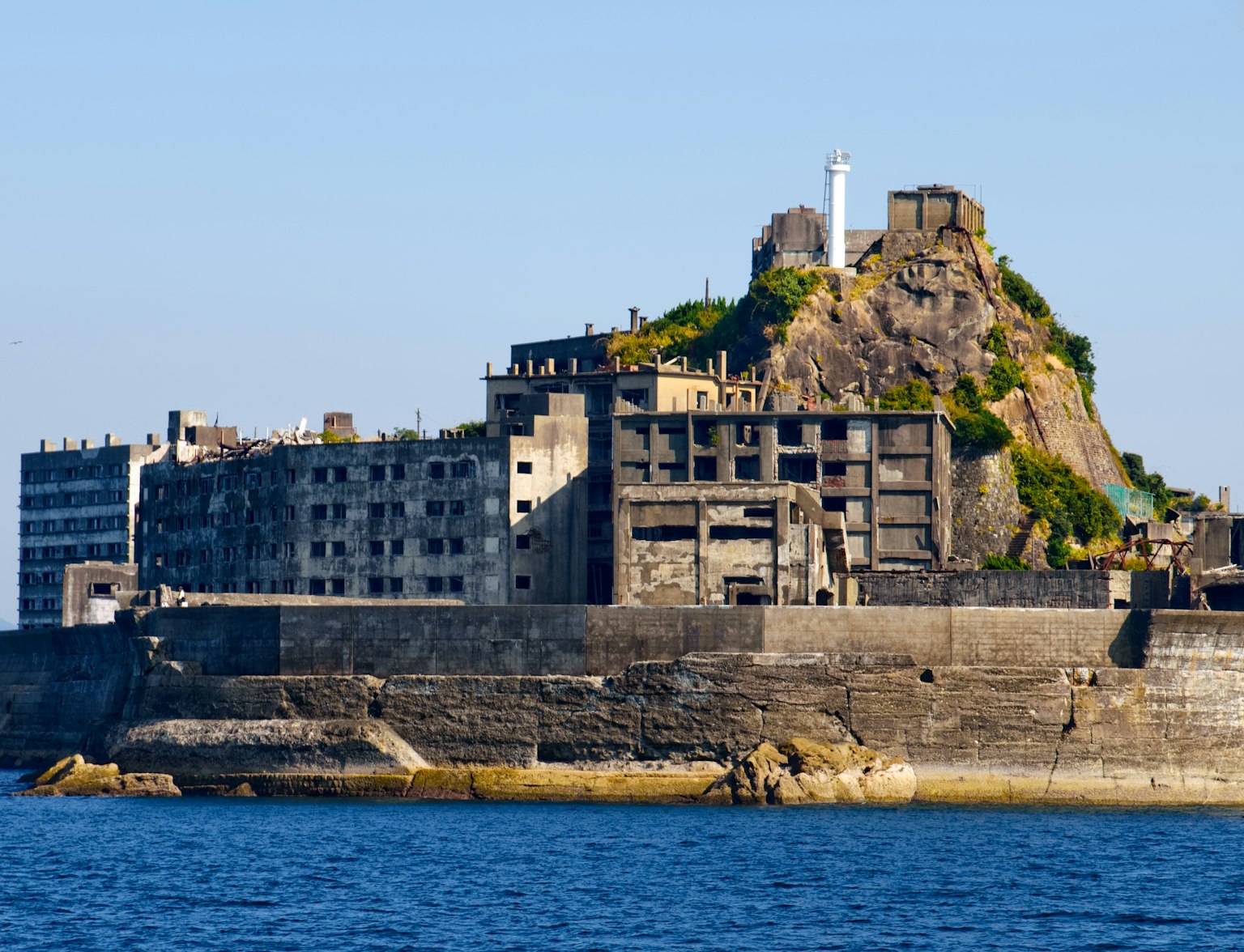
軍艦島への忘れられない旅に出かけましょう - 古びた小道と自然の再生を通して歴史がささやく、時がかりの楽園です。
この公園は、核兵器の破壊力の強力なシンボルとして機能し、平和と軍縮の必要性を痛烈に思い起こさせます。原爆の燼火から街を再建した日本人の強靭さと精神の証です。
場所:平野町 7-8, 長崎, 852-8117, 日本
開館時間:24時間年中無休
参加費:無料
締切日:年中無休
かつて東アジア最大の教会であった浦上天主堂は、長崎の原爆爆の爆心地から半キロも離れていませんでした。原爆が炸裂した大聖堂は全壊し、鉄筋コンクリート造の建物は瞬く間に瓦礫と化しました。今日、大聖堂の廃墟は、原爆投下と日本の都市への壊滅的な影響を思い起こさせる忘れられない役割を果たしています。
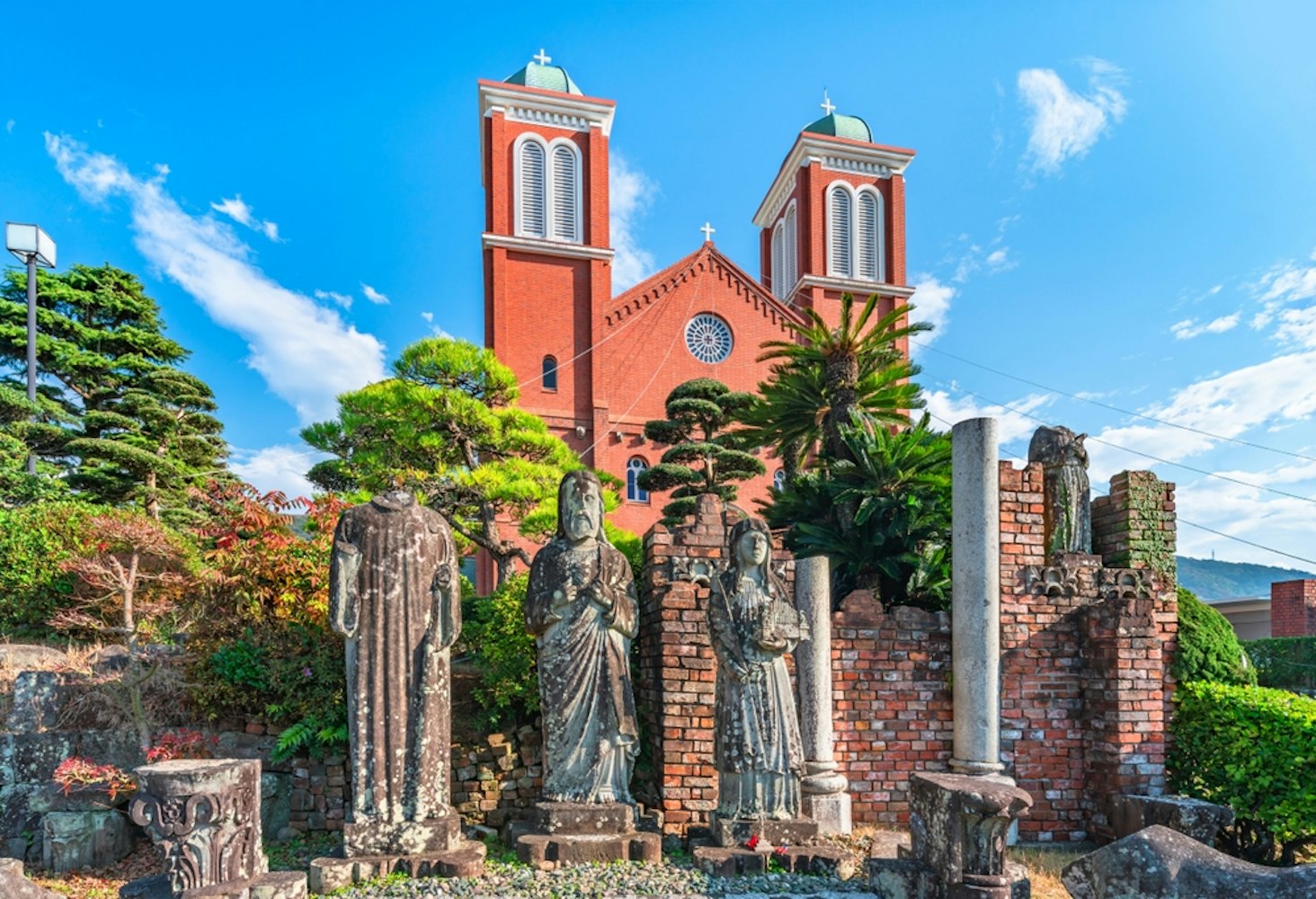
大聖堂は1959年に再建され、現在は希望と再生の象徴となっています。新しい建物は元の場所の近くにあり、廃墟となった大聖堂の一部は記念碑として保存されています。
この場所への訪問者は、爆弾の熱で顔が溶けた損傷した聖母マリア像を見ることができます。この痛烈な光景は、原爆の影響を受けた人類をはっきりと思い起こさせ、彼らの人生はあの運命の日の出来事によって永遠に変わってしまった。
場所:1-79 Motoomachi, 長崎, 852-8117, 日本
開館時間:毎日午前 8:00 から午後 5:00 まで
参加費:無料(寄付歓迎)
締切日:年中無休ですが、サービス中はアクセスが制限される場合があります
二十六殉教者博物館と記念碑は、1597年に長崎で十字架につけられた最初の日本人キリスト教徒を記念しています。原爆投下とは直接関係ありませんが、この博物館は、長崎の日本におけるキリスト教の中心地としてのユニークな歴史。この歴史は、浦上天主堂の破壊を含む街の爆撃を特に重要なものにしました。
日本のキリシタンの歴史にまつわる遺物や資料を展示しています。迫害を受けながらも信念を貫いた日本人のたくましさと信仰の証です。
殉教者のブロンズ像が描かれた大きな十字架の記念碑は、街を見下ろす丘の上に立っています。この見晴らしの良い場所からは、新浦上天主堂をはじめ、再建された街の様子を眺めることができ、殉教者の時代から原爆投下まで、そしてその後の街の長い歴史に思いを馳せることができます。
場所:西坂町 7-8, 長崎, 850-0051, 日本
開館時間:毎日午前9:00から午後5:00まで
参加費:大人500円、小人・団体割引あり(変更になる場合があります)
締切日:年中無休
長崎歴史文化博物館は、長崎の複雑な過去を知ることができる重要な施設です。日本と外国との貿易や文化交流、特に太平洋戦争中、長崎は日本の数少ない外国貿易港の一つであったため、工芸品や記録を展示しています。また、広島と長崎に原子爆弾が投下されたときの破壊を展示し、原爆の包括的な説明も紹介しています。
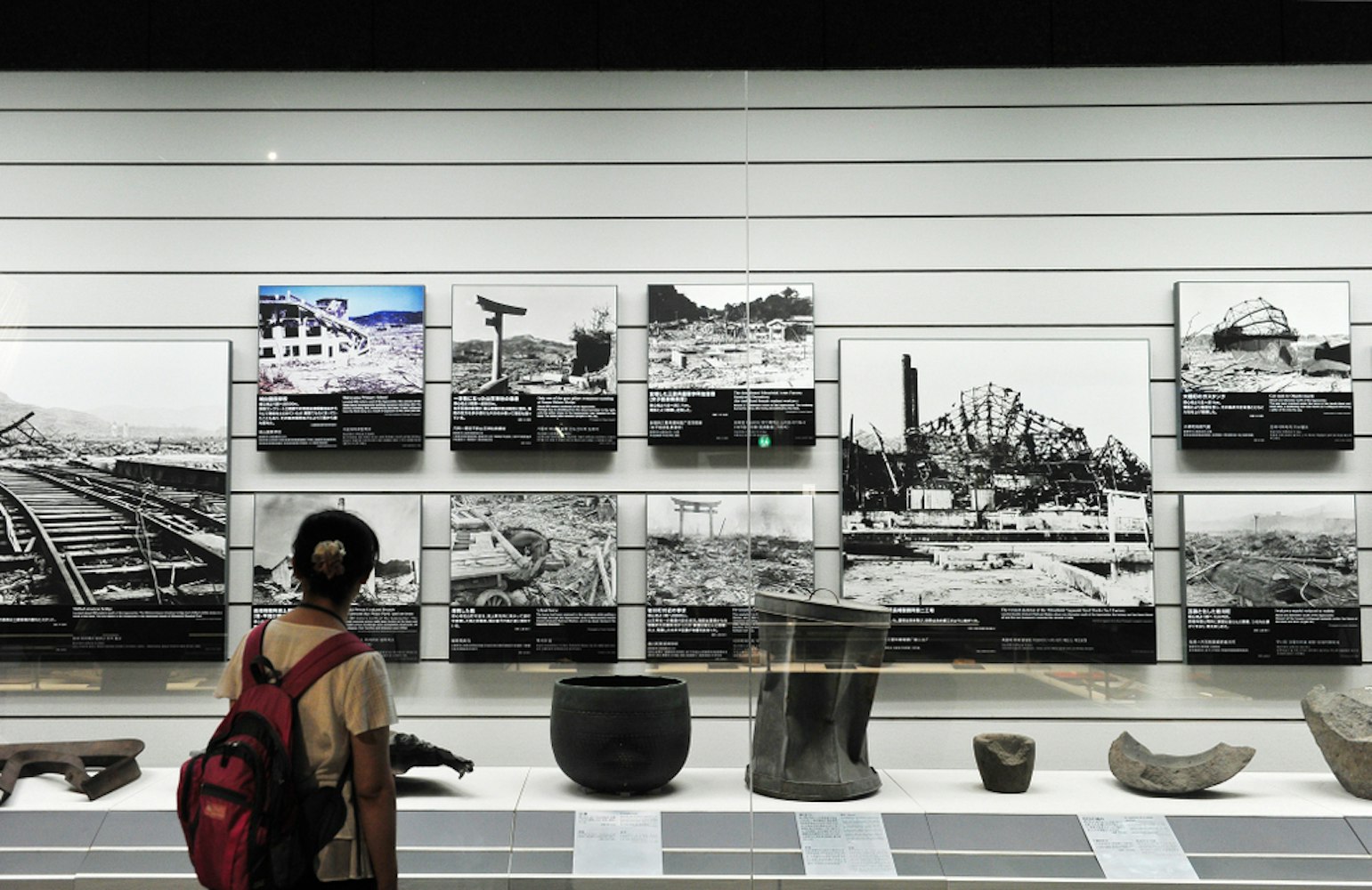
原爆投下後、日本政府と軍は甚大な被害と人命の損失に立ち向かわなければなりませんでした。この博物館は、日本の歴史におけるこの困難な時期を痛烈に思い起こさせてくれます。
訪問者は、爆撃が街のインフラや人々に与えた影響や、未曾有の危機に日本軍がどのように対応したかについて学ぶことができます。この博物館は、核兵器の破壊的な可能性を考えると、平和の重要性と核軍縮の必要性を強調しています。
場所:館山 1-1-1, 長崎, 850-0007, 日本
開館時間:午前 8:30 から午後 7:00 (4 月から 9 月)、午前 8:30 から午後 6:00 (10 月から 3 月)。休館日:月曜日、12月29日〜1月3日
参加費:610円(大人)、シニア・小児割引あり(変更の可能性あり)
締切日:12月29日〜1月3日(月)
国立長崎原爆死没者平和祈念館は、長崎原爆で亡くなった方々を厳粛に追悼する施設です。戦没者追悼館は、犠牲者を追悼し、核戦争の恐ろしさを後世に伝えるための日本政府の取り組みの一環であり、反省と追悼のための静かな空間を提供しています。
ホールには、原爆犠牲者の登録簿、被爆者の証言、原爆の余波を展示する展示があります。長崎に原子爆弾「ファットマン」が投下され、多くの死傷者が出、街が完全に破壊された日を思い起こさせるものです。このホールは、平和の大切さと、核兵器の使用を阻止するための世界的な取り組みを訪問者に思い出させます。
場所:平野町 7-8, 長崎, 852-8117, 日本
開館時間:午前 8 時 30 分から午後 5 時 30 分 (3 月から 11 月)、午前 8 時 30 分から午後 5 時 00 分 (12 月 - 2 月)。休館日:12月29日〜31日
参加費:無料
締切日:12月29日〜31日
長崎の山王神社は、爆心地からわずか800メートルのところにありながら、原爆投下を奇跡的に生き延びた神社です。神社の鳥居は、周囲の荒廃の中で唯一残された建物であり、圧倒的な破壊に直面した回復力の象徴でした。
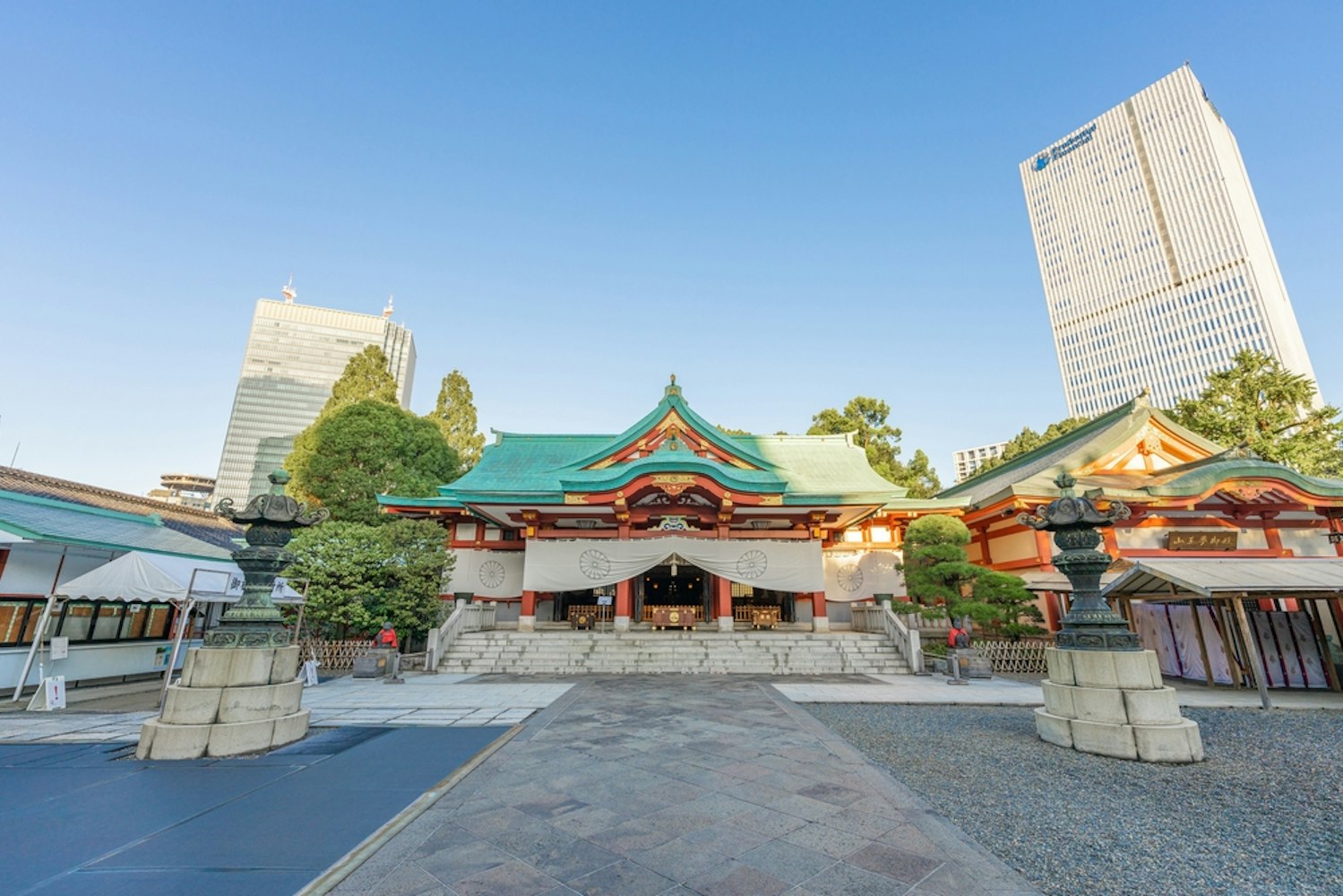
戦時中は防空壕として使われ、日本軍や民間人の避難所として使われた神社は特に重要です。現在、神社への参拝者は、元の鳥居や原爆の爪痕が残る他の建造物を見ることができます。山王神社は、原爆投下とその余波を痛烈に思い起こさせ、逆境に立ち向かう日本人の回復力の証となっています。
場所:上長崎町 18-15, 長崎, 852-8106, 日本
開館時間:いつでもアクセス可能ですが、施設の営業時間は異なる場合があります
参加費:無料ですが、一部のパーツは特別なイベント中に料金がかかる場合があります
締切日:年中無休
長崎ペンギン水族館は、戦争で荒廃した過去ではなく、豊かな自然遺産に焦点を当て、街をまったく異なる視点で見ることができます。水族館にはさまざまな種類のペンギンが生息しており、その行動や生息地に関する貴重な洞察を提供しています。訪問者は、自然の生息地を模倣するように設計された環境でこれらの魅力的な生き物を観察できます。
原爆投下や太平洋戦争とは直接関係ありませんが、暗黒の時代からの街の復興と変貌を象徴しています。長崎ペンギン水族館は、自然保護と教育への取り組みの証であり、訪問者に自然界の驚異について学び、感謝する機会を提供しています。
場所:宿町3-16, 長崎, 851-0121, 日本
開館時間:毎日午前9:00から午後5:00まで。入館は閉館の30分前まで
参加費:大人610円、高校生300円、4歳〜中学生200円。価格は変更される場合があります
締切日:12月29日〜1月1日
広島と長崎の慰霊碑を訪れるのに理想的な時期は、春(3月から5月)と秋(9月から11月)で、気候は穏やかで、桜や紅葉で景色が特に美しいです。
また、原爆投下記念日である8月6日と8月9日には、さまざまな式典や文化行事が行われる重要な追悼行事が重なります。この時期の訪問者は、遺跡の歴史的意義に深く関わり、共同体の記憶に参加することができます。
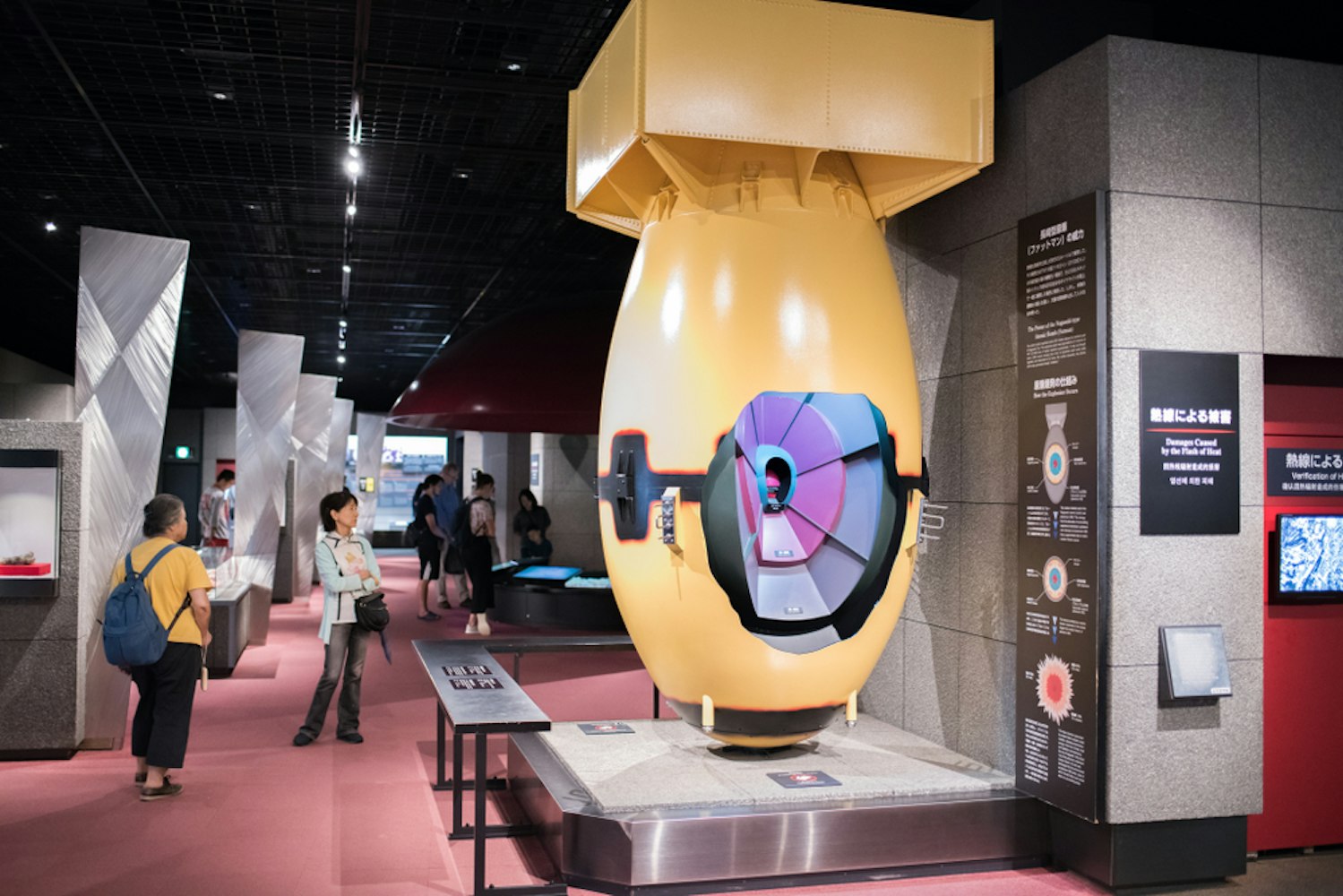
静かに訪れたい方には、冬は寒いですが、人混みは少なくなります。一年を通して敬意を払った行動が不可欠ですが、季節ごとに、訪問者が悲劇を振り返り、これらの記念碑が象徴する平和擁護を受け入れるための独特の雰囲気を提供します。
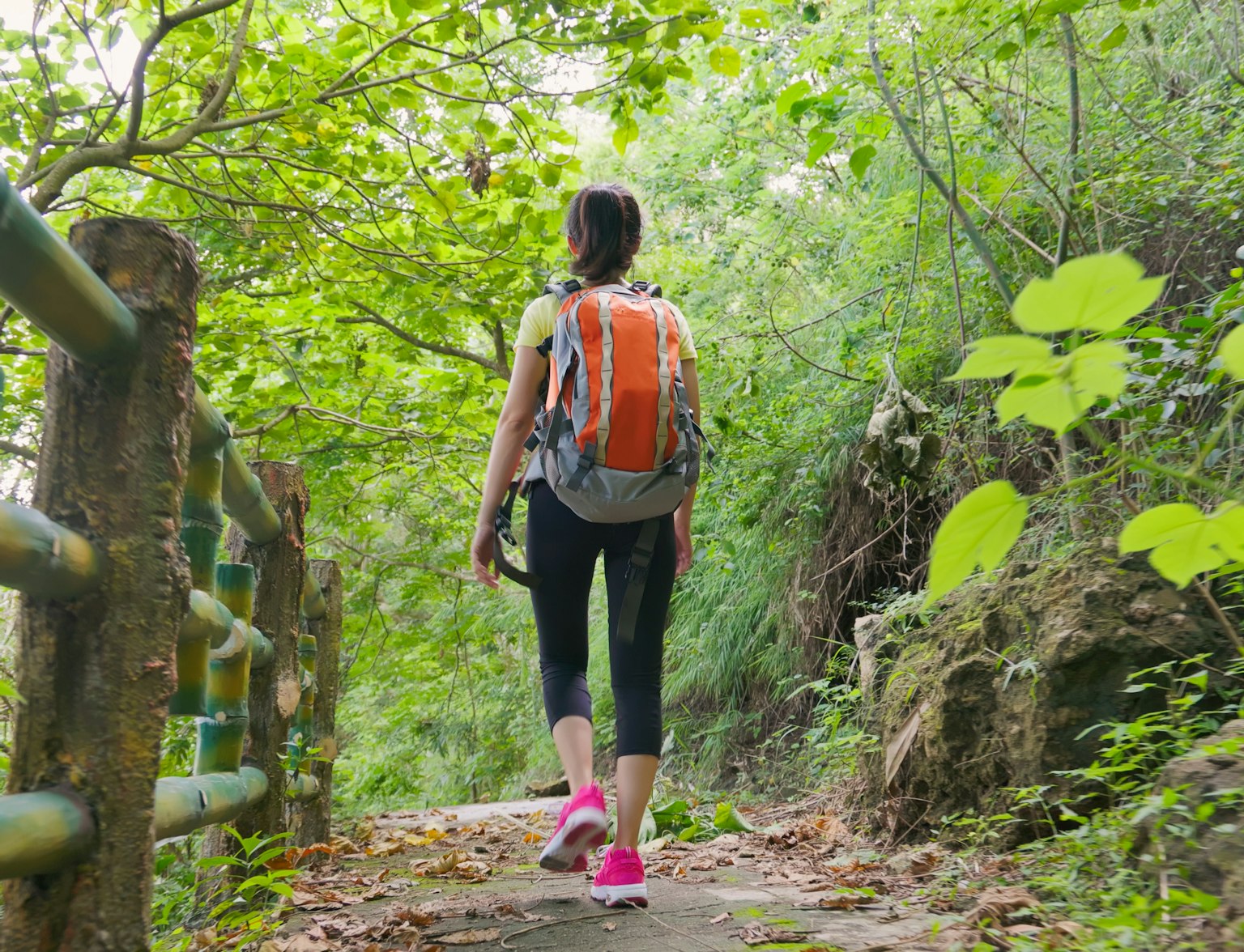
広島の風光明媚な美しさを、朝のハイキングや伝統的な野外茶道で探索しましょう。
広島平和記念資料館や長崎原爆資料館などは、いつ訪れても深く、示唆に富み、訪れる人すべてに永続的なインパクトを残します。
広島と長崎の記念碑を訪れることは、地味でありながら啓発的な体験です。ここでは、訪問が敬意を払い、有意義なものとなるようにするためのヒントをいくつかご紹介します。
履歴を理解する:訪問する前に、広島と長崎の原爆投下を取り巻く歴史的な出来事に慣れ親しんでください。長崎の第二の標的であるエノラ・ゲイによって広島に投下された最初の原子爆弾と、それに伴う日本の降伏の背景を理解することは、あなたの訪問を豊かにするでしょう。
記念碑を尊重する:常に畏敬の念を示してください。これらの場所は観光地であるだけでなく、原爆投下された犠牲者を追悼する場所でもあります。
博物館を訪問:広島平和記念資料館と長崎原爆資料館では、原爆の核分裂の経緯や空襲警報、原爆の余波など、原爆に関する総合的な情報を提供しています。
記念行事への出席:8月の原爆投下記念日と重なる場合は、記念行事への参加をご検討ください。これらの式典は、原爆投下が日本本土と世界に与えた影響について、より深い洞察を与えてくれます。
他の史跡を探索する:原爆慰霊碑以外にも、戦時中の日本の軍人や民間人の生活に光を当てる史跡を探索してください。これには、広島の日本軍第二軍司令部や長崎の日本軍関連施設が含まれる可能性があります。
ガイドを雇うことを検討してください。知識豊富なガイドは、看板や音声ガイドでは得られない追加の洞察やコンテキストを提供できます。爆弾の照準点、爆発半径、爆弾の爆発力などの詳細を照らすことができます。
影響を振り返る:原爆の惨禍と平和の大切さについて考えてみましょう。これらの記念碑は、核兵器の破壊力と戦争の人的犠牲をはっきりと思い起こさせるものです。
広島と長崎の記念碑は、人類の歴史の中で最も重要な瞬間の1つに深い洞察を与えてくれます。これらの遺跡は、核兵器の凄まじい破壊力と、生き残った人々の回復力を目の当たりにしています。これらの慰霊碑を訪れることは、教育的な経験であるだけでなく、平和の大切さとすべての人間の命の価値をより明確に理解するための深い感動的な体験でもあります。
広島と長崎の物語に心を動かされ、敬意を表したい場合は、当社のウェブサイトTripToJapanから旅行を予約することをお勧めします。私たちのプラットフォームは、これらの重要な記念碑への訪問を含む包括的な旅行パッケージを提供し、あなたの旅が有意義であるのと同じくらいシームレスであることを保証します。
では、なぜ待つのですか?訪問TripTo日本今日、これらの歴史的建造物への旅行の計画を始めましょう。過去を思い出し、平和な未来を思い描いてください。

歴史的建造物を探索し、街の変貌について学び、隠された地元の宝石を体験してください。
はい、日本は毎年、広島では8月6日、長崎では8月9日をメモリアルデーとし、犠牲者を追悼し、平和と核軍縮を推進しています。
日本は、毎年の追悼式典や、過去を強く思い起こさせ、平和へのコミットメントの象徴となる広島平和記念公園を通じて、広島を深く称えています。
広島平和記念館(旧広島県産業振興会館)は、1915年に建てられ、1945年の原爆投下を生き延びた後、1996年から記念碑として保存されています。
広島の平和記念公園には70以上の記念碑があり、長崎には原爆資料館や国立平和記念館など、それぞれが原爆の記憶と平和の追求に捧げられた重要な場所がいくつかあります。
